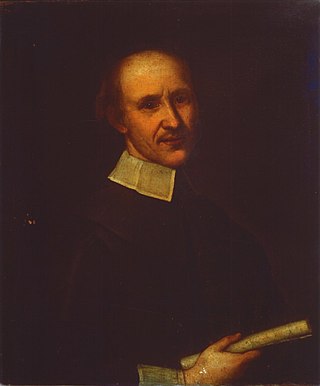Related Research Articles

1698 (MDCXCVIII) was a common year starting on Wednesday of the Gregorian calendar and a common year starting on Saturday of the Julian calendar, the 1698th year of the Common Era (CE) and Anno Domini (AD) designations, the 698th year of the 2nd millennium, the 98th year of the 17th century, and the 9th year of the 1690s decade. As of the start of 1698, the Gregorian calendar was 10 days ahead of the Julian calendar, which remained in localized use until 1923.

Giovanni Battista Tiepolo, also known as GiambattistaTiepolo, was an Italian painter and printmaker from the Republic of Venice who painted in the Rococo style, considered an important member of the 18th-century Venetian school. He was prolific, and worked not only in Italy, but also in Germany and Spain.

Earl of Lindsay is a title in the Peerage of Scotland. It was created in 1633 for John Lindsay, 10th Lord Lindsay, who later inherited the ancient Earldom of Crawford. The two earldoms remained united until the death of the 22nd Earl of Crawford, also sixth Earl of Lindsay, in 1808. Then the earldom of Lindsay passed to David Lindsay, while the earldom of Crawford became dormant because no-one could prove a claim to the title until 1848. Both David, 7th Earl of Lindsay, and his successor Patrick, 8th Earl of Lindsay, died without sons, and the disputed claim over the earldom was resolved by the House of Lords in 1878 in favour of Sir John Trotter Bethune, 2nd Baronet.

Giovanni Legrenzi was an Italian composer of opera, vocal and instrumental music, and organist, of the Baroque era. He was one of the most prominent composers in Venice in the late 17th century, and extremely influential in the development of late Baroque idioms across northern Italy.

The Accademia di San Luca is an Italian academy of artists in Rome. The establishment of the Accademia de i Pittori e Scultori di Roma was approved by papal brief in 1577, and in 1593 Federico Zuccari became its first principe or director; the statutes were ratified in 1607. Other founders included Girolamo Muziano and Pietro Olivieri. The Academy was named for Luke the Evangelist, the patron saint of painters.

Ciampino is a city and comune in the Metropolitan City of Rome, Lazio, Italy. It was a frazione of Marino until 1974, when it became a comune; it obtained the city status in 2004 by a presidential decree.

San Giovanni Battista de Rossi is a church on via Cesare Baronio in the quartiere Appio-Latino of Rome, Italy. It is dedicated to Saint Giovanni Battista de' Rossi (1698–1764), who was canonized in 1881 by Pope Leo XIII.
The decade of the 1690s in archaeology involved some significant events.

Giovanni Giustino Ciampini was an ecclesiastical archaeologist.
Events from the year 1625 in Ireland.
Giacomo Grimaldi was an Italian historian and Vatican archivist, who lived in the early 17th century.

Il GiustinoRV 717 is a 1724 opera by Vivaldi set to a libretto by Nicolò Beregan, originally used for the 1683 opera of the same name by Giovanni Legrenzi, and also later set by Albinoni and Handel. The opera was composed for the 1724 carnival season in Rome and premiered at the Teatro Capranica.
Count Nicolò Beregan was an Italian nobleman, lawyer and amateur opera librettist. His Giustino was first set to music in 1683 by composer Giovanni Legrenzi for Il Giustino, and later reused by both Vivaldi and Handel.

Il Giustino is an opera in three acts by composer Giovanni Legrenzi. The work uses an Italian-language libretto by Nicolò Beregan based on the life of Emperor Justin I. The opera premiered on 12 February 1683 at the Teatro San Salvador in Venice; Selfridge-Field gives 7 February as the date. Legrenzi dedicated the work to Alexander Farnese, Duke of Parma.
Giustino may refer to:
The Roman Catholic Diocese of Capri was a Roman Catholic diocese located in the city of Capri on the island of Capri, in the Tyrrhenian Sea off the Sorrentine Peninsula, on the south side of the Gulf of Naples in the Campania region of Italy. On 27 June 1818, it was suppressed to the Archdiocese of Sorrento.
Giovanni Cito (1633–1708) was a Roman Catholic prelate who served as Bishop of Lettere-Gragnano (1698–1708).
Giovanni Battista Lampugnani was an Italian writer of opera libretti and texts for oratorios. He also served as a correspondent for the Grand Duchy of Tuscany in Poland, Austria, and England during the 1690s.
References
- ↑ "Ciampini, Giovanni Giustino 1633-1698". worldcat.org. Retrieved 4 June 2017.